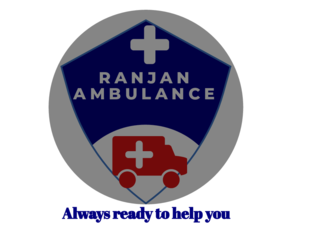Ambulance Service in Darbhanga: Facilitating Critical Healthcare Access
Darbhanga, a historic city in Bihar, India, is home to a vibrant community with diverse healthcare needs. In this article, we delve into the landscape of ambulance services in Darbhanga, exploring their importance, challenges, and the efforts underway to enhance their efficiency and accessibility.
Importance of Ambulance Services
Ambulance services are pivotal in any community’s healthcare infrastructure, providing crucial emergency medical transport and care. In Darbhanga, a city known for its cultural richness and economic activities, timely access to medical care through ambulances can mean the difference between life and death. From accidents to medical emergencies like heart attacks or childbirth complications, ambulances serve as the first responders, ensuring patients reach hospitals swiftly and safely.
Current Ambulance Infrastructure
Darbhanga’s ambulance services are primarily managed through a combination of government initiatives and private sector participation. Government Ambulance Services: The Government of Bihar has implemented the National Ambulance Service (NAS) and other state-level initiatives to bolster emergency response capabilities. These ambulances are equipped with basic life support (BLS) and are staffed with trained paramedics to stabilize patients during transit to hospitals.
Private Ambulance Services: Private entities also play a crucial role in Darbhanga’s ambulance network, offering a range of services from basic to advanced life support (ALS). These services cater to various medical needs and often provide quicker response times due to their strategic deployment across the city. Private ambulances are equipped with advanced medical equipment and trained personnel to handle critical emergencies effectively.
Challenges Faced
Despite efforts to strengthen ambulance services, Darbhanga faces several challenges that impact their effectiveness:
Infrastructure and Road Conditions: Limited road infrastructure, particularly in rural areas surrounding Darbhanga, can hinder ambulance response times. Poor road conditions during monsoons exacerbate these challenges, delaying critical care delivery.
Resource Allocation: Adequate funding for ambulance fleets, maintenance, and medical equipment is essential for sustained service quality. Ensuring a steady supply of consumables and fuel for ambulances remains a logistical challenge.
Awareness and Utilization: Public awareness about when and how to utilize ambulance services needs improvement. Many residents may not know how to access emergency numbers or understand the importance of calling for an ambulance promptly during medical emergencies.
Staffing and Training: Recruitment and retention of skilled paramedics and emergency medical technicians (EMTs) are crucial. Continuous training programs are needed to ensure personnel are equipped to handle diverse medical emergencies effectively.
Initiatives and Innovations
Despite these challenges, various initiatives are underway to improve ambulance services in Darbhanga:
Technology Integration: The adoption of GPS tracking systems and mobile apps for ambulance dispatch improves response times and navigation, particularly in densely populated areas or during peak traffic hours.
Community Engagement: Health education campaigns and first aid training programs empower communities to respond effectively during emergencies. Initiatives to educate residents about the importance of timely ambulance utilization can potentially save lives.
Partnerships and Collaboration: Collaboration between healthcare providers, government agencies, and non-governmental organizations (NGOs) facilitates resource sharing and enhances emergency response coordination. Joint initiatives ensure a more comprehensive approach to healthcare delivery.
Case Studies and Success Stories
Highlighting specific instances where ambulance services made a significant impact can illustrate their critical role in Darbhanga:
Emergency Response Efficiency: Cases where ambulances arrived promptly at accident scenes or homes during medical emergencies, providing timely medical care and transporting patients to hospitals for further treatment.
Critical Care Transport: Instances where advanced life support ambulances successfully managed complex medical cases during transit, showcasing the importance of skilled paramedics and well-equipped vehicles.
Future Outlook
Looking ahead, the future of ambulance services in Darbhanga appears promising with ongoing efforts and anticipated improvements:
Expansion and Accessibility: Plans to expand ambulance coverage to underserved areas and improve response times through strategic deployment of ambulances in high-demand areas.
Technology Advancements: Continued integration of artificial intelligence (AI) and telemedicine in ambulance services to enhance real-time diagnosis and treatment capabilities en route to hospitals.
Quality Improvement: Initiatives to standardize ambulance service protocols, enhance training programs for personnel, and ensure regular maintenance of ambulance fleets to uphold service quality.
Conclusion
Ambulance services in Darbhanga are indispensable for providing timely and critical healthcare to its residents. Despite challenges like infrastructure limitations and resource constraints, concerted efforts by stakeholders are enhancing emergency medical response capabilities. Through technology integration, community engagement, and collaborative partnerships, Darbhanga is poised to strengthen its ambulance services, ensuring every individual receives prompt and efficient medical care during emergencies.
In summary, Darbhanga’s ambulance services exemplify the city’s commitment to healthcare accessibility and emergency preparedness. As the city continues to grow and evolve, so too will its ability to meet the healthcare needs of its populace through robust and responsive ambulance services. Ambulances in Darbhanga are not just vehicles; they are lifelines, embodying hope and resilience in the face of medical emergencies.

